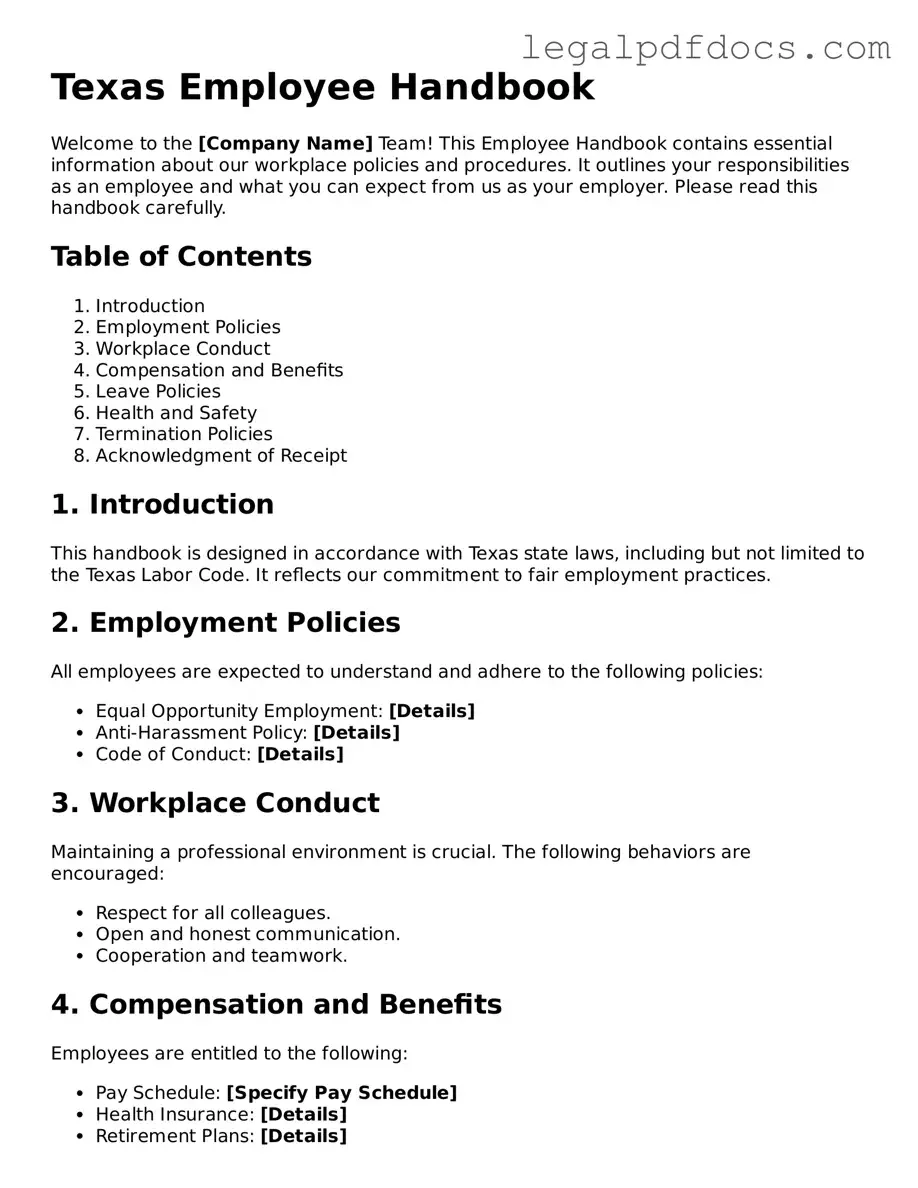Official Employee Handbook Form for Texas
The Texas Employee Handbook form is a crucial document that outlines the policies, procedures, and expectations for employees within a Texas-based organization. This handbook serves as a guide for both employers and employees, ensuring everyone is on the same page regarding workplace standards and practices. To get started on creating your own employee handbook, click the button below.
Open Employee Handbook Editor Here
